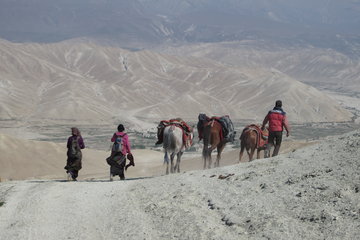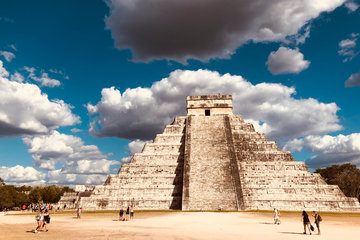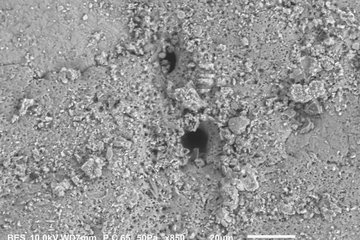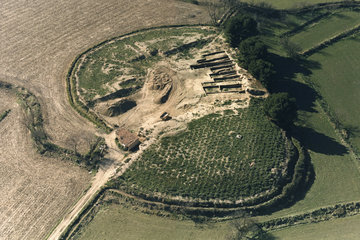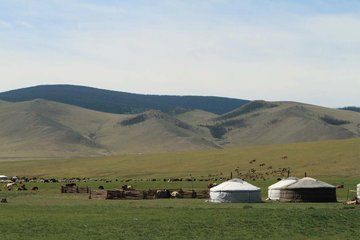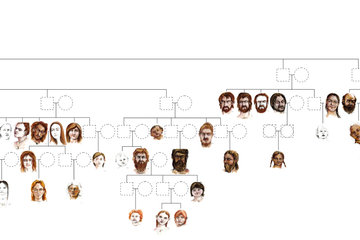Genetic changes in Bronze Age southern Iberia
DNA from 136 ancient Iberians reveals genomic and social transformations during the Copper Age to Bronze Age transition in southwestern Europe
The third millennium BCE brought about substantial transformations that are visible in the cultures of Bronze Age Europeans. A new study led by researchers from the Max Planck Institutes for the Science of Human History (Jena) and Evolutionary Anthropology (Leipzig), and the Universitat Autònoma de Barcelona documents the arrival of new genetic ancestry to southern Iberia, concomitant with the rise of the Early Bronze Age El Argar culture around 2,200 BCE.

The third millennium BCE is a highly dynamic period in the prehistory of Europe and western Asia, characterized by large-scale social and political changes. In the Iberian Peninsula, the Copper Age was in full swing around 2,500 years BCE with substantial demographic growth, attested by a large diversity of settlements and fortifications, monumental funerary structures, as well as ditched mega-sites larger than 100 hectares. For reasons that are still unclear, the latter half of the millennium experienced depopulation and the abandonment of the mega-sites, fortified settlements and necropoles.
In southeastern Iberia, one of the most outstanding archaeological entities of the European Bronze Age emerged around 2,200 BCE. This so-called 'El Argar' culture, one of the first state-level societies on the European continent, was characterised by large, central hilltop settlements, distinct pottery, specialized weapons and bronze, silver and gold artefacts, alongside an intra-murial burial rite. A new study explores the relation between dynamic shifts at population scale and the major social and political changes of the third and second millennia BCE by analysing the genomes of 136 ancient Iberians, ranging from 3,000 to 1,500 BCE.
Genetic turnover and melting pot

Including published genomes from Iberia, the new study encompasses data from nearly 300 ancient individuals and focuses specifically on the Copper to Bronze Age transition around 2,200 BCE.
“While we knew that the so-called 'steppe'-related ancestry, which had spread across Europe during the third millennium BCE, eventually reached the northern Iberian Peninsula around 2,400 BCE, we were surprised to see that all prehistoric individuals from the El Argar period carried a portion of this ancestry, while the Chalcolithic individuals did not,” says Max Planck researcher Wolfgang Haak, senior author and principal investigator of the study.
The genomic data reveals some of the processes underlying this genetic shift. While the bulk of the genome shows that Bronze Age individuals are a mix of local Iberian Chalcolithic ancestry and a smaller part of incoming ancestry from the European mainland, the paternally inherited Y chromosome lineages show a complete turnover, linked to the movement of steppe-related ancestry that is also visible in other parts of Europe.
The rich new data from the El Argar sites also show that these two components do not fully account for the genetic make-up of the early Bronze Age societies.
“We also found signals of ancestry that we traced to the central and eastern Mediterranean and western Asia. We cannot say exactly whether these influences arrived at the same time as the steppe-related ancestry, but it shows that it formed an integrative part of the rising El Argar societies, attesting to continued contacts to these regions,” adds Vanessa Villalba-Mouco, postdoctoral researcher at the Max Planck Institute and Instituto de Biología Evolutiva.
Social implications

“Whether the genetic shift was brought about by migrating groups from North and Central Iberia or by climatic deteriorations that affected the eastern Mediterranean around 2,200 BCE is the million-dollar question,” says co-PI and senior author Prof Roberto Risch from the Universitat Autònoma de Barcelona. “It would be foolish to think that it can all be explained by a simple, one-factor model. While the temporal coincidence is striking, it is likely that many factors played a role.”
One of these factors could be pandemics, such as an early form of the Plague, which has been attested to in other regions of Europe around the time. While not found directly among the tested individuals in southern Iberia, it could be a cause or driver for the movement or disappearance of other groups in the region.
“In any case, we can now conclude that the population movement starting in the eastern European steppe zones around 3,000 BCE was not a single migratory event, but required over four centuries to reach the Iberian Peninsula and another 200 years to appear in present-day Murcia and Alicante,” adds Risch.
The archaeological record of the El Argar group shows a clear break with previous Chalcolithic traditions. Burial rites, for example, changed from communal to single and double burials within the building complexes. Elite burials also indicate the formation of strong social hierarchies. Testing for biological relatedness, the researchers found that males are on average more closely related to other people at the site, indicating that the group was likely patrilineally structured. Such a social organization could explain the stark reduction of the Y-lineage diversity.
“We observe similar patterns of social organisation and increasing stratification also in other parts of Early Bronze Age Europe, in fact broadly around the same time and with similar characteristics of early state-like formations. This suggests a structured restart or resetting following some form of crisis or unstable, highly dynamic times,” summarises Haak.
[WH/AJZ]






